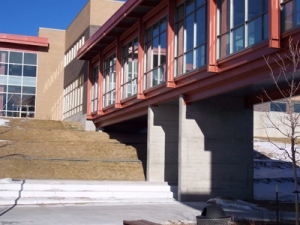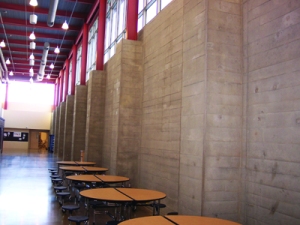Located on 69 acres of forested area, Palmer Ridge High School in Monument, Colo. integrates the natural terrain of its surroundings into architectural design.
Exposed rough sawn textured concrete created with Scott System form liners beautify planter boxes and interior and exterior walls, creating a natural accent while producing a sense of modernism.
The site features area landscaping and rooftop gardens with native foliage to add splendor and serve as a learning tool for students.
Natural light filters through a glass bridge walkway that connects three academic wings and supports the traffic flow of 1,200 students and staff. At 219,000 sq. ft., Palmer Ridge High
School is touted as the largest geothermal project in Colorado.
Cost: $45.4M, Architect: H+L Architecture
Contractor: Saunders Construction









Recent Comments